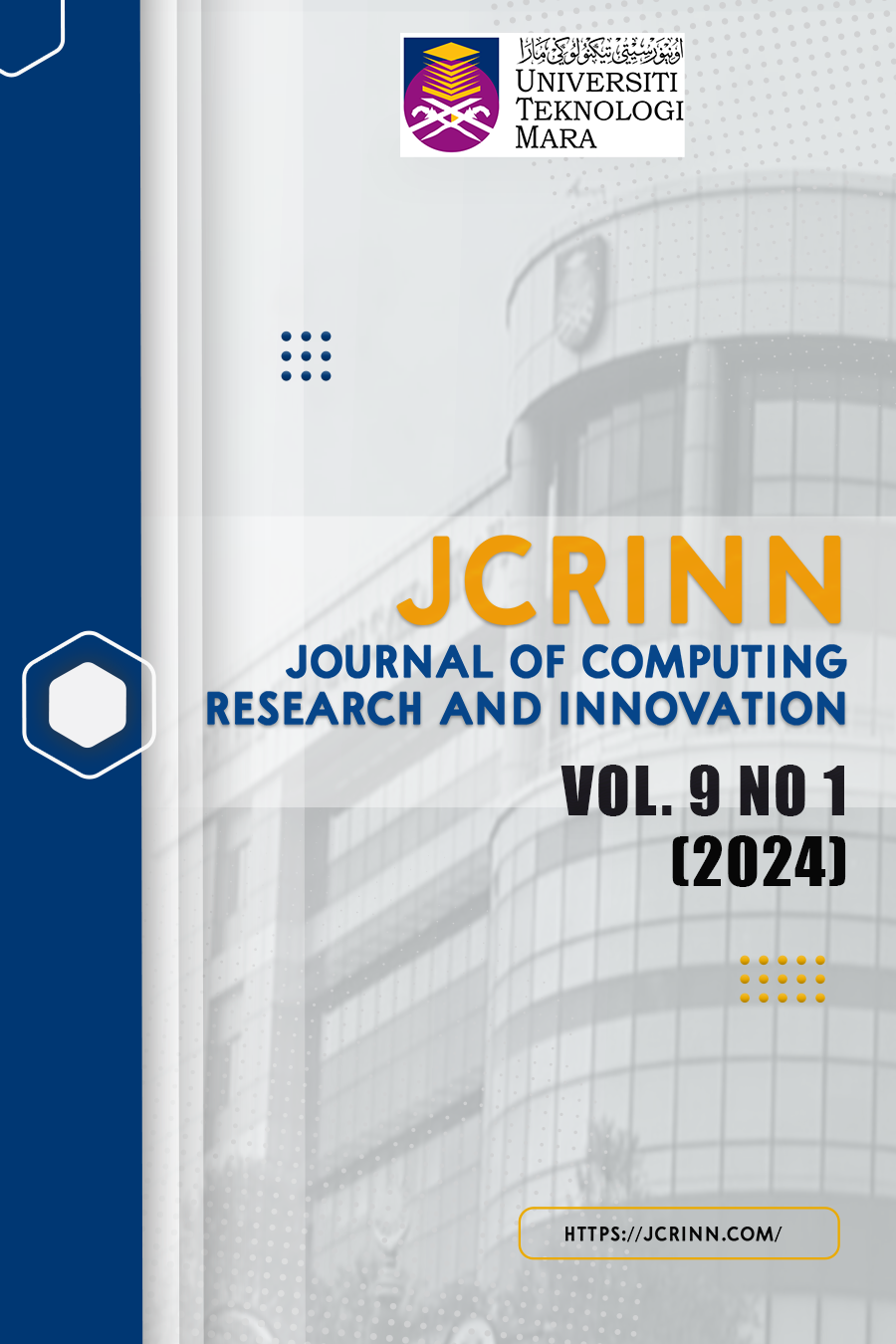SafeSteps: A Persuasive Child Pedestrian Safety Learning Mobile Application
DOI:
https://doi.org/10.24191/jcrinn.v9i1.422Keywords:
Child Pedestrian Safety, Mobile Learning, Persuasive Technology, User Experience Testing, Children LearningAbstract
This study focuses on the design, development, and evaluation of SafeSteps, a mobile application dedicated to child pedestrian safety. Employing multimedia elements, SafeSteps imparts knowledge on pedestrian safety to children, with an integrated quiz module enhancing learning activities. The project development adhered to the Waterfall Model Methodology, encompassing distinct stages of analysis, design, implementation, testing, and documentation. Guided by the principles of persuasive technology and multimedia, the application was developed using Android Studio as the Integrated Development Environment (IDE) tool. A User Experience Testing (UXT) involving 31 children aged six to twelve aimed to assess engagement, identify usability concerns, and discover areas for enhancement. Utilizing the User Experience Questionnaire (UEQ), the study gathered feedback, revealing a majority expressing a positive perception of SafeSteps in terms of attractiveness, efficiency, perspicuity, dependability, stimulation, and novelty. The UXT findings offer significant insights into user perceptions and interactions with SafeSteps. This information will be instrumental in identifying potential areas for improvement, implementing design modifications, and enhancing the overall user experience of the mobile application, emphasizing the importance of incorporating multimedia and interactive elements in child pedestrian safety interventions.
Downloads
References
Aldenaini, N., Alqahtani, F., Orji, R., & Sampalli, S. (2020). Trends in persuasive technologies for physical activity and sedentary behavior: A systematic review. Frontiers in Artificial Intelligence, 3.
Cloutier, M. S., Beaulieu, E., Fridman, L., Macpherson, A. K., Hagel, B. E., Howard, A. W., ... & Rothman, L. (2021). State-of-the-art review: preventing child and youth pedestrian motor vehicle collisions: critical issues and future directions. Injury Prevention, 27(1), 77-84.
Darus, N. S., Borhan, M. N., Ishak, S. Z., Ismail, R., & Razali, S. F. M. (2018). Pattern of child pedestrian collisions and injuries in Malaysia. Jurnal Teknologi, 80(4).
Darus, N. S., Borhan, M. N., Ishak, S. Z., Ismail, R., Mohd. Razali, S. F., Yunin, N. A. M., & Hamidun, R. (2022). The effect of physical environment risk factors on vehicle collisions severity involving child-pedestrians in Malaysia. SAGE Open, 12(1).
Deb, S., Carruth, D. W., Fuad, M., Stanley, L. M., & Frey, D. (2019, July). Comparison of child and adult pedestrian perspectives of external features on autonomous vehicles using virtual reality experiment. In Stanton, N. (Eds.) Advances in Human Factors of Transportation (pp. 145-156). Springer International Publishing. https://doi.org/10.1007/978-3-030-20503-4-13
Fogg, B. J. (2003). Persuasive technology: Using computers to change what we think and do (interactive technologies) (1st ed.). Morgan Kaufmann.
Hamidun, R., Roslan, A., & Sarani, R. (2017). Exploring factors for pedestrian fatalities at junctions in Malaysia. Pertanika J. Soc. Sci. Humanity, 25, pp. 1833-40.
Kamarudin, N. H., Marzuki, M., Rosmiza, M. Z., & Mapjabil, J. (2020). Tahap keselamatan pejalan kaki untuk perjalanan ke sekolah (The level of pedestrian safety for travelling to school). Geografia, 16(4).
Obeng-Atuah, D., Poku-Boansi, M., & Cobbinah, P. B. (2016). Pedestrian crossing in urban Ghana: Safety implications. Journal of Transport & Health, 5, pp. 55-69.
Riaz, M. S., Cuenen, A., Polders, E., Akram, M. B., Houda, M., Janssens, D., & Azab, M. (2022). Child pedestrian safety: Study of street-crossing behaviour of primary school children with adult supervision. Sustainability, 14(3), pp. 1503.
Rosmani, A. F., & Wahab, N.A. (2011). i-IQRA’: Designing and constructing a persuasive multimedia application to learn arabic characters (pp. 98-101). 2011 IEEE Colloquium on Humanities, Science and Engineering. https://0.1109/CHUSER.2011.6163884
Schwebel, D. C. (2017). Children Crossing Streets: The cognitive task of pedestrians across nations. Annals of Global Health, 83(2), pp. 328-332.
Solah, M. S., Baba, M., Aqbal, H., Azhar, H., Zulhadi, M., & Allyana SMR, S. (2018). Revisiting pedestrian casualties in Malaysia and the escalating new threats. Malaysian Journal of Public Health Medicine (2).
Staton, C., Vissoci, J., Gong, E., Toomey, N., Wafula, R., Abdelgadir, J., Zhou, Y., Liu, C., Pei, F., Zick, B. and Ratliff, C.D. (2016). Road traffic injury prevention initiatives: A systematic review and metasummary of effectiveness in low and middle income countries. Plos One, 11(1).
Thurman, D. J. (2016). The epidemiology of traumatic brain injury in children and youths: A review of research since 1990. Journal of Child Neurology, 31(1), pp. 20-27.
Toroyan, T. (2015). Global status report on road safety. World Health Organisation, p. 318.
World Health Organization. (2013). Pedestrian safety: a road safety manual for decision-makers and practitioners [Brochure]. https://www.who.int/publications/i/item/pedestrian-safety-a-road-safety-manual-for-decision-makers-and-practitioners
Downloads
Published
Issue
Section
License
Copyright (c) 2024 Nadia Abdul Wahab, Muhammad Aiman Azhar, Aznoora Osman, Norfiza Ibrahim, Azmi Abu Seman, Siti Sarah Md Ilyas (Author)

This work is licensed under a Creative Commons Attribution-ShareAlike 4.0 International License.


